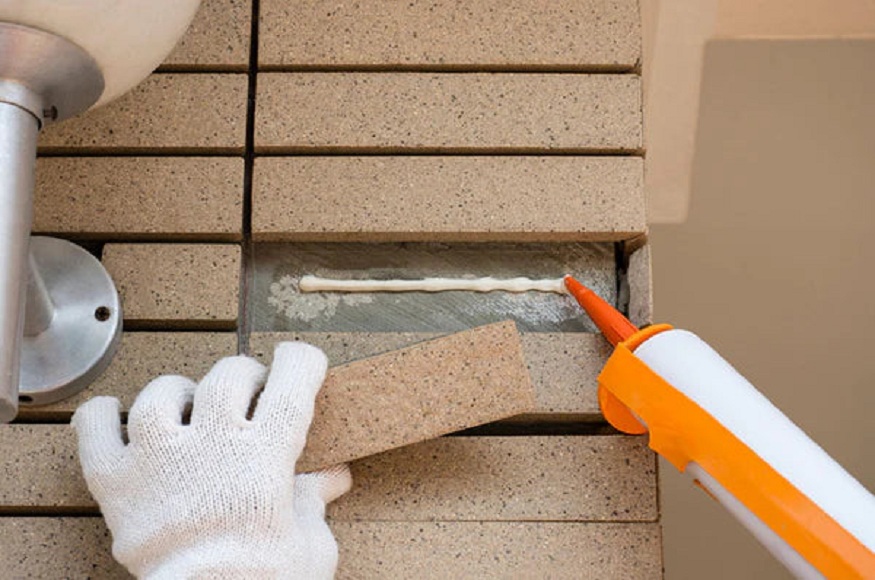 Adhesives have become crucial for modern construction due to their versatility and efficiency. These materials drastically improve the strength and integrity of constructions by bonding a variety of components. Because adhesives are lighter, more flexible, and frequently more affordable than traditional mechanical fasteners, they are gradually replacing them as a result of technological advancements. Shop construction adhesives to build a solid construction and enhance both the aesthetic and functional aspects of buildings. Further, we explore several types and roles of adhesives, as well as the latest advancements, so one can admire their role in shaping future construction practices.
Adhesives have become crucial for modern construction due to their versatility and efficiency. These materials drastically improve the strength and integrity of constructions by bonding a variety of components. Because adhesives are lighter, more flexible, and frequently more affordable than traditional mechanical fasteners, they are gradually replacing them as a result of technological advancements. Shop construction adhesives to build a solid construction and enhance both the aesthetic and functional aspects of buildings. Further, we explore several types and roles of adhesives, as well as the latest advancements, so one can admire their role in shaping future construction practices.
Adhesives’ Function in Construction
Because they improve a building’s appearance and functionality, adhesives have revolutionised the construction sector. They have created new opportunities in architectural design because of their capacity to fuse disparate elements, such as wood to concrete or metal to glass. This feature makes it possible to create sleek, contemporary buildings with minimal visible joints and clean lines—qualities that are widely desired in current design.
Additionally, using adhesives provides a finish more seamless and aesthetically pleasing by eliminating the need for obtrusive mechanical fasteners.
Adhesives enhance the functionality and longevity of constructions in addition to their appearance. They reduce the possibility of material fatigue and failure by uniformly distributing stress across bonded surfaces. This is especially helpful in high-stress situations where conventional fasteners might not offer enough support, including bridges and tall structures.
Adhesives have a lot to offer the environment. In comparison to some traditional construction techniques, many contemporary formulations are made to be low in volatile organic compounds (VOCs), which makes them a more environmentally friendly option.
Adhesive Types by Composition
Adhesives’ qualities and applicability for different construction applications are determined by their composition. Different products have unique characteristics that make them perfect for particular jobs. Knowing these types of Adhesives can help choose the best glue for a project, guaranteeing longevity and performance.
1.Epoxy
Epoxy adhesives are frequently used in construction applications that call for strong bonding because of their reputation for strength and durability. Epoxy adhesives are made of a resin and a hardener, and when they cure, they create a strong bond that is impervious to heat, moisture, and chemicals. Because of this, they can be used in harsh environments or situations where long-term durability is important.
Polyurethane
Polyurethane adhesives are valued for their adaptability and capacity to fuse a wide range of materials, such as plastic, metal, and wood. Because these adhesives can absorb and disperse stress without weakening the connection, they work well in applications where movement or vibration is anticipated.
Acrylic
Acrylic adhesives have a reputation for setting quickly and sticking firmly to a wide range of surfaces, such as glass, metal, and plastic. These adhesives are often used in settings where fast bonding is crucial, including assembly lines or situations where time is of the essence.
Adhesive Technology Advances
Advances in technology and a growing focus on sustainability are driving a revolutionary phase in the glue sector. Adhesives are being developed to provide functions beyond simple bonding as smart materials and nanotechnology gain traction. These developments are changing the way adhesives are used in construction by improving their functionality and broadening their range of uses.
The development of bio-based adhesives, which are made from renewable materials, is one noteworthy advancement. These adhesives are designed to minimise dependency on petrochemicals, which is consistent with the building sector’s increasing dedication to sustainability.
Bio-based adhesives, which use natural components like lignin or soy, have a less harmful effect on the environment and are frequently less hazardous too.
